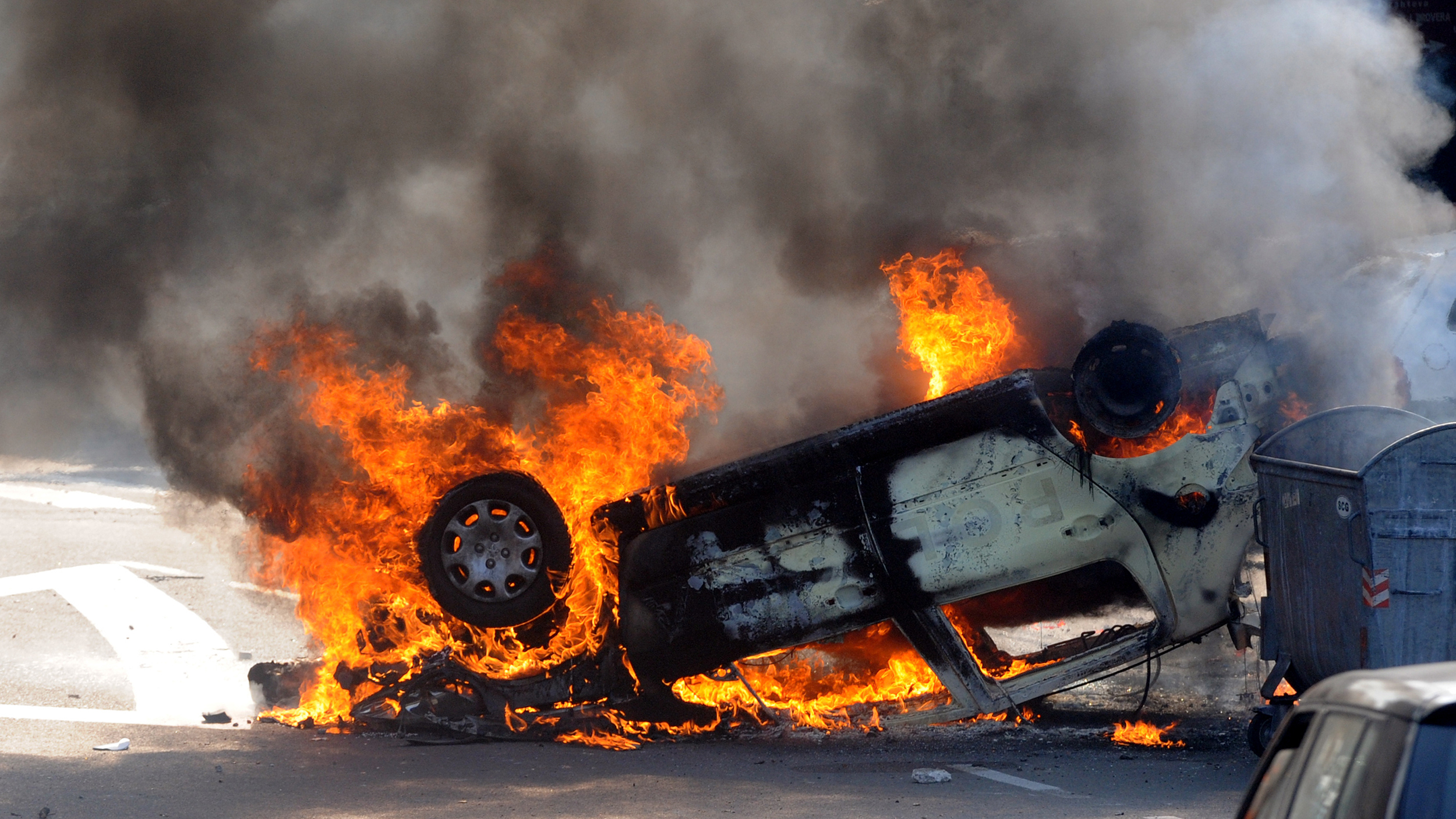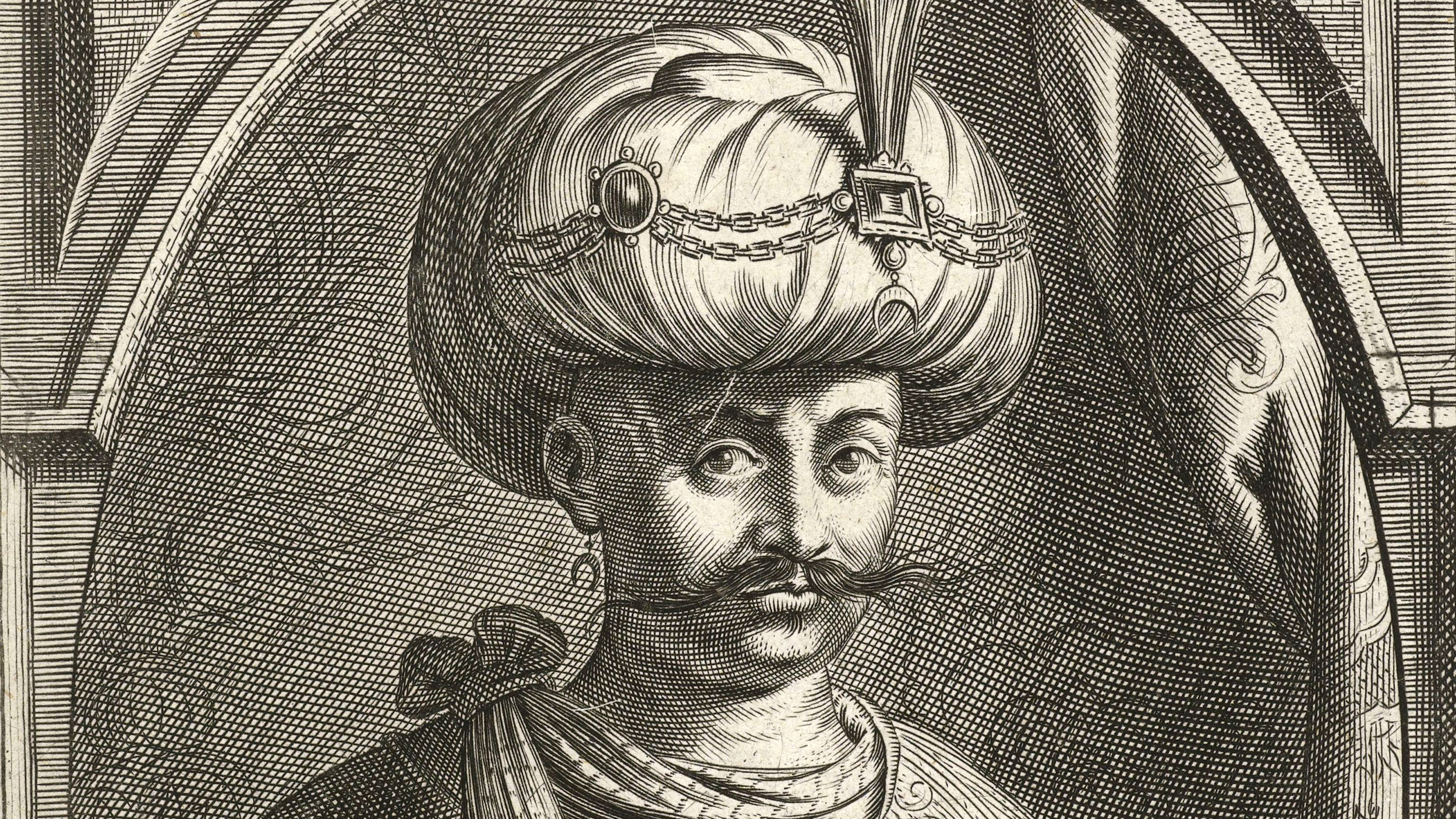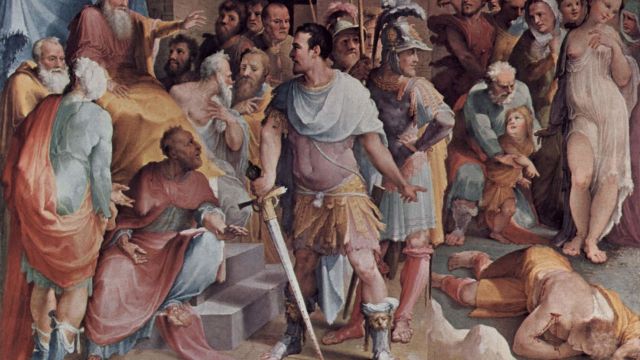The story behind the real-life Assassin’s Creed

- The Nizari were a sect within the Ismaili branch of Shi’a Islam known for their use of subterfuge, sabotage, and assassination.
- Sensationalist rumors and propaganda spread about the Nizari, including stories of drug-induced initiation ceremonies, but it is unlikely that they used drugs regularly.
- The Nizari operated by infiltrating court life and diplomatic missions, as well as carrying out assassinations with daggers, targeting high-profile enemies. They were eventually defeated by the Mongols.
Two men walk down a dark stone corridor, their woolen shoes making barely a sound. They are dressed as monks, with shadowy cowls hiding their faces and baggy robes concealing their secrets. But these are not monks. These are acolytes of the Nizari, veteran assassins sent by The Old Man of the Mountains. Tonight, they have a job to do: kill a man.
Conrad of Monferrat staggers out of a room up ahead. He’s drunk, but he has a presence nonetheless. He moves like a warrior, with the weight earned from many battles. The two men reach into their robes. They each pull out identically engraved daggers. They charge Conrad from two sides, but you don’t become a Christian King of Jerusalem by dance and wit. He pulls one close and headbutts his nose. The other stabs Conrad in the lower back. He screams and pulls his own knife out. He lashes out and slices the dazed, broken-nosed assassin in the chest. An airless gurgle, and he’s dead. But his partner does not wait. He dashes in. This time, his blow is better. It’s lethal. Conrad falls to the ground, skewered by a dagger engraved with Syrian calligraphy. The Old Man of the Mountain has kept his word.
The first assassins
The word “assassin” comes from the Arabic word hashīshīn, which was an Islamic sect active between the 11th and 13th centuries. The label hashīshīn was almost certainly a defamatory slur given to them by their enemies. It was said that members of the hashīshīn sect would get high on opium and hashish before an assassination. Worse still, it was commonly supposed that the hashīshīn lived their lives in reclusive, sybaritic orgies of excess. In Islam, intoxicants are forbidden by the Quran. So, calling someone hashīshīn — a junkie or a waster, basically — is a deliberate insult.
The hashīshīn was actually a sect within a sect within a sect. They were the Nizari wing of the Ismaili sect of the Shi’a denomination of Islam. Essentially, after the death of the Prophet Muhammad, the Islamic world was divided into Sunni and Shi’a — both Muslim and both at each other’s throats. At the time of the Nizari Ismaili order, the battlelines were between the Fatimid Caliphate (Shi’a) and the Seljuk Turks (Sunni). The Nizari Ismaili (Shi’a) were caught in the middle of both; they were at war with and hated the Seljuks, but they were also vying for independence from the Fatimid Caliphate. It’s no easy thing to wage a two-front war against two massive nation-states when you are little more than a sectarian offshoot.
So, without big armies or swathes of territories to call upon, the Nizari Ismaili used the only thing left to them: subterfuge, sabotage, and assassination.
Sensationalism and propaganda
When you’re in the business of political killings, you make a lot of enemies. And your enemy’s historians will not remember you well. A lot of what we know about the Nizari is ridiculous slander mixed with Christian orientalism. The wildest story we owe to Marco Polo.
It’s about the assassins’ bacchanal initiation ceremonies. Although it might be legend rather than fact, it was said that the leader of the Nizari, Hasan-i Sabbah, would get new recruits absolutely off their rocker with hashish, opium, and unknown exotic drugs. They’d smoke themselves into oblivion. Then, high as a kite, Hasan would parade beautiful damsels in front of the new recruit. He’d reveal fountains of milk and honey. The initiate would be gifted an orgiastic paradise of women, wine, and music, all of which was carefully choreographed to resemble Muhammed’s depiction of paradise. When the initiates came to and sobered up, Hasan would say, “If you follow me, you will receive that.” It was like a free sample of heaven, and now you needed to sign up.
In reality, it’s highly unlikely the Nizari used drugs often, if at all. In fact, sects like the Nizari Ismaili often gain popularity and win over converts precisely because of their austere, puritanical “true religion” rather than any licentiousness. Polo was just regurgitating the same hearsay everyone else had heard.
The truth of the dagger
So what truth is there to the stories of the Nizari? We do know that they were prolific in their murder, and they were good at it. Despite what Christian chronicles might have thought, they did not exclusively, or even overwhelmingly, target crusader lords like Conrad de Montferrat. In modern terms, it makes much more sense to see them as guerilla fighters or terrorists who were targeting the Seljuk Turks. In fact, they even allied with the Christians when it served their political ends.
The Nizari operated in two ways. The first was that they infiltrated court life and diplomatic missions to try and manipulate, cajole, and steer the leaders of the Seljuk empire. For example, in the 1090s, the Nizari successfully managed to have one of their own, Qiwam, appointed as the vizier to Prince Mahmud of the Seljuk Empire. Qiwam whispered in the prince’s ear, and as a result, a Seljuk army was persuaded against marching on one of the assassins’ mountain strongholds.
The second way the Nizari operated was, unsurprisingly, by assassination. It’s hard to know how many people the Nizari killed: We don’t have their records and there was so much fear and paranoia around the cult of assassins that pretty much any murder was ascribed to them. But, as a rule, the Nizari used daggers and targeted high-profile enemies, usually in public. As with Conrad of Monferrat, they would disguise themselves as monks, beggars, servants, or soldiers and would kill anyone who wished the Nizari Ismaili ill.
Don’t mess with the Mongols
The Nizari thrived or languished depending on the talents of their leaders. The first leader, Hasan, was a shrewd and charismatic leader who knew when to send a dagger and when to send silver words. Eighty years after Hasan’s death, Rashid al-Din Sinan likewise led the Nizari well. But their decline was inevitable.
Even at the height of their power in the 11th and 12th centuries, the Nizari only ever held a scattering of easily defendable, but strategically unimportant, mountain fortresses. They could never field an army. Their power depended on the panic they spread and the skill of their assassins. Saladin, the famous Muslim general who reclaimed Jerusalem, almost seized the Nizari stronghold at Alamut but inexplicably lifted the siege after a week — the reasons for which are still a mystery to historians. After this, the Nizari were considered little more than gadflies or stories to scare children.
One people you did not want to annoy, though, was the Mongols. When their 13th-century equine blitzkrieg stormed across Eurasia, they weren’t going to stop for some “Old Man in the Mountains.” When the Nizari threatened the Mongols, the Mongols brought swift and brutal destruction down on them. In 1256, they took Alamut. Within four years, every Nizari fortress was lost. You don’t bring a knife to a Khan fight.





